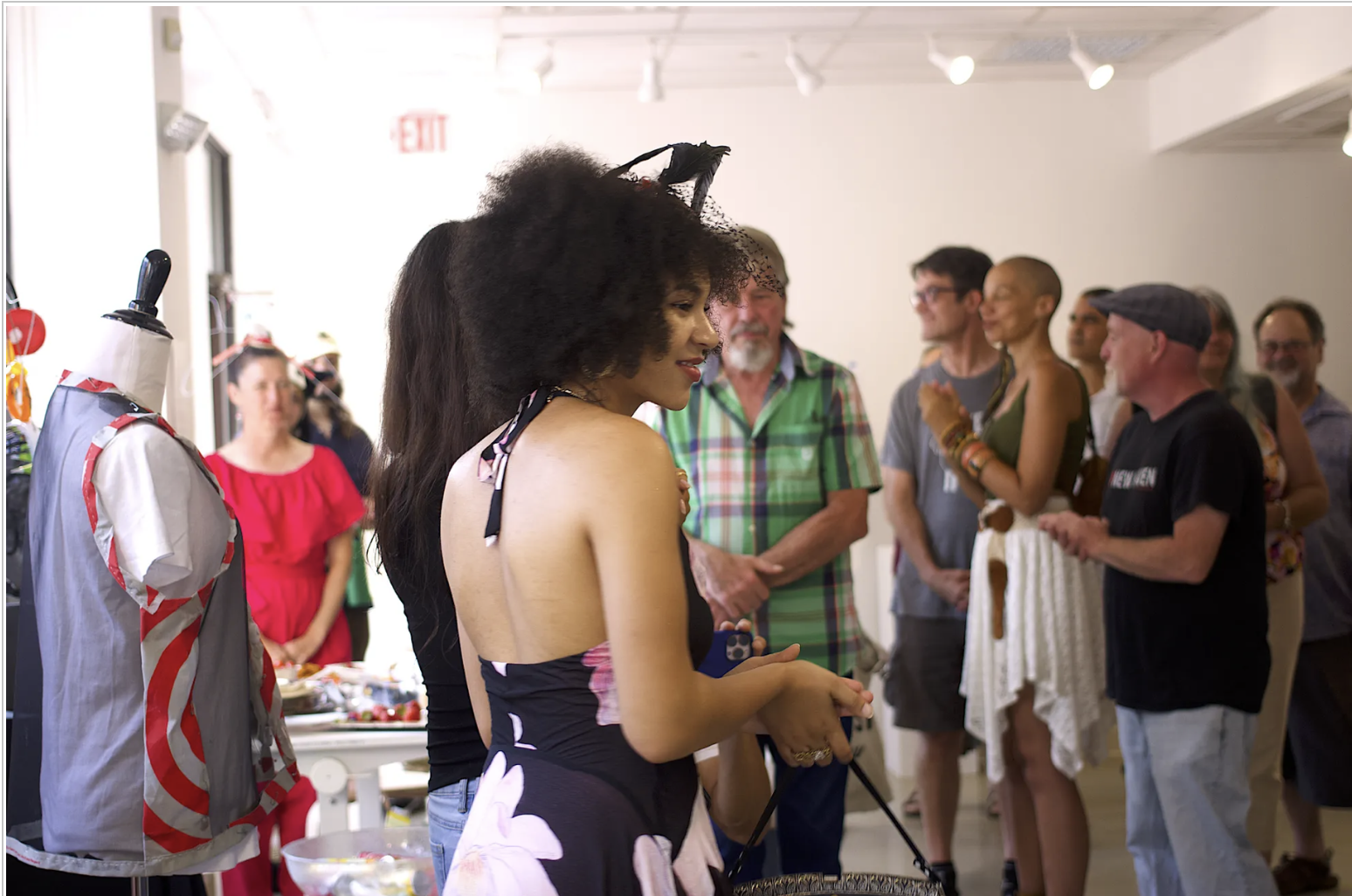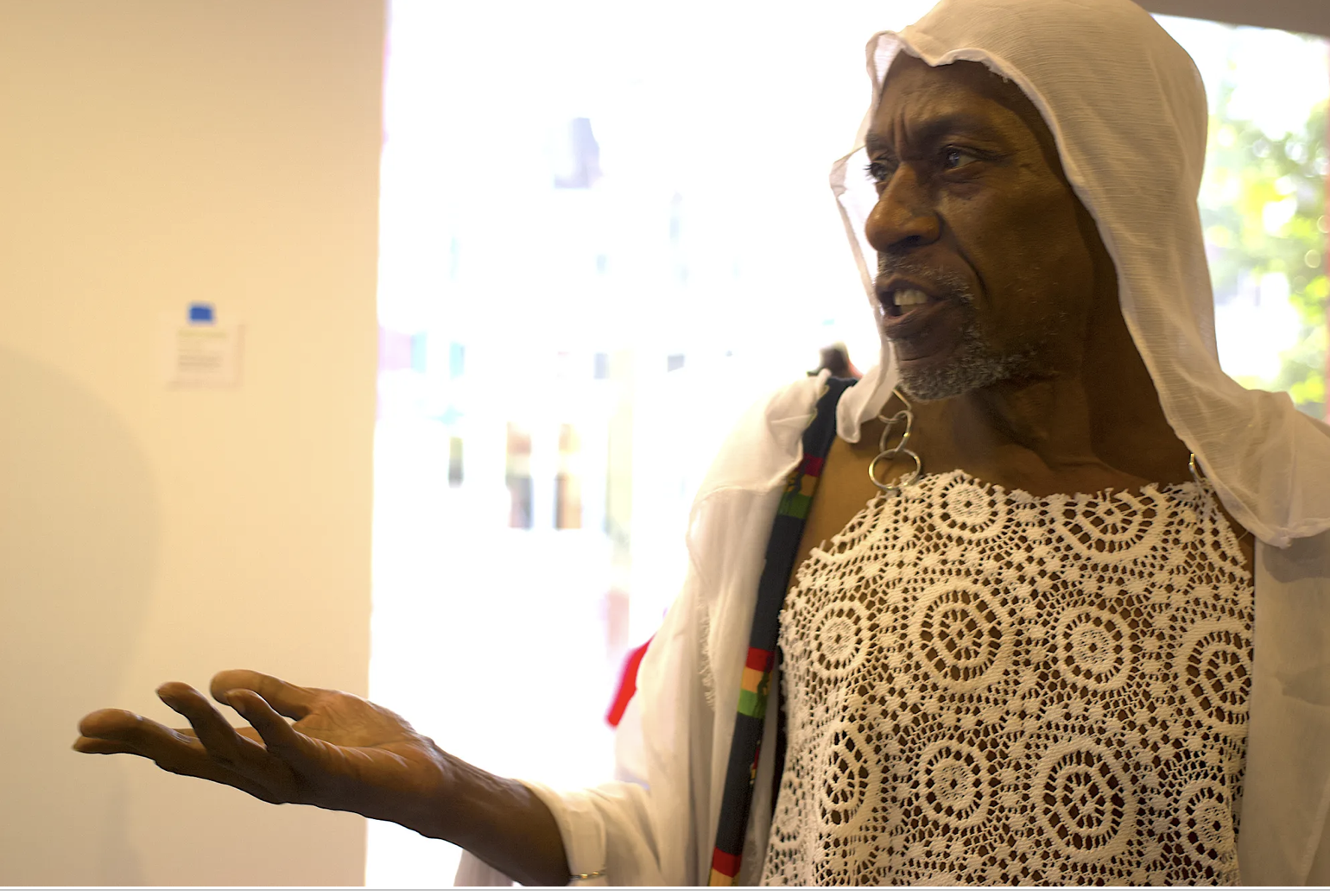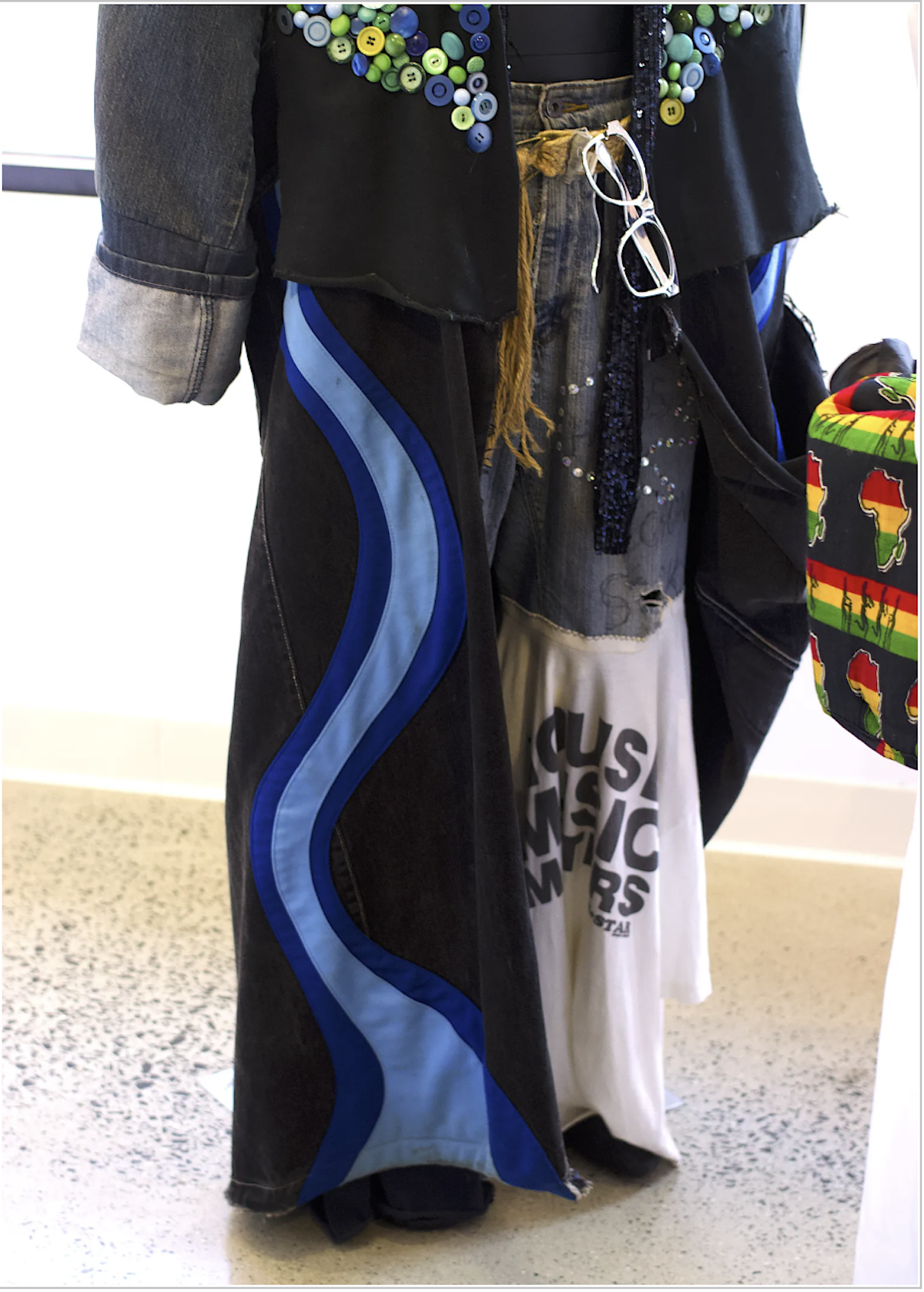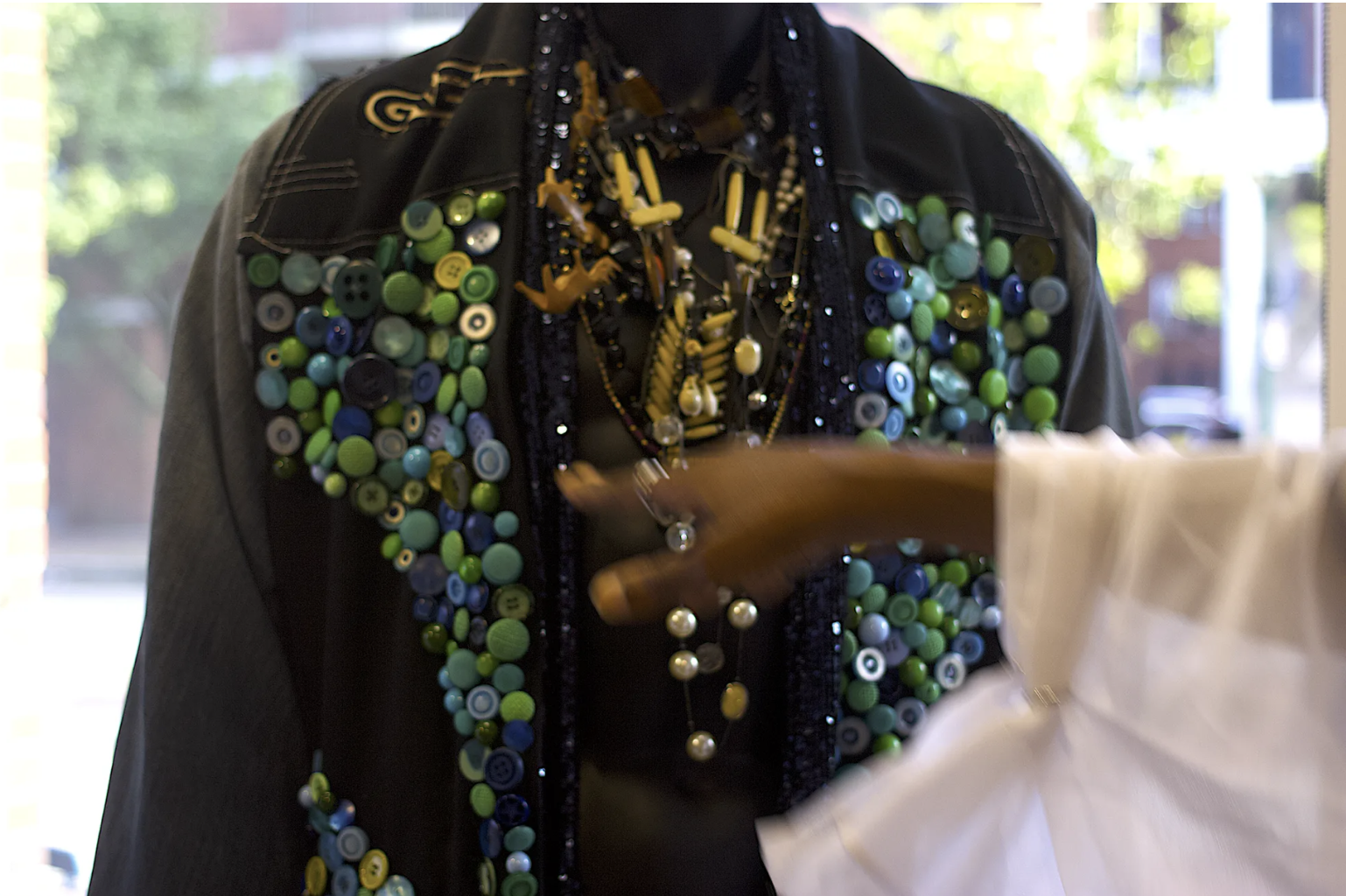Trash To Fashion
Curated by Rebecca Fraser
63 Audubon St.
New Haven
Through Aug. 17
Before leaving for artist and curator Rebekah Fraser’s Trash to Fashion show opening Friday afternoon, New Haven fashion designer Donald Carter made sure to say goodbye to his kittens Nerfertiti and Hercules, cuddled in a ball together.
It was only his second day with the two mythically cute beings. As if he’d absorbed the feline whimsy, Carter brought that same playful energy all the way to the show.
“I know it says don’t touch, but I just want to touch it,” Donald Carter said, making his way around a newsprint-constructed dress by artist Susan McCaslin. “Something about it is so magical.”
The exhibit showcased dresses, jackets, vests, and more, all made with “trash” of some kind by nine local artists, including Carter. Materials included plastic bags, old T‑shirts, window screens, and credit cards. It was a surreal experience for Fraser, an example of fiction coming to life in real time.
Tara L. Roí, Fraser’s alter ego who writes “steamy romances in a heating world,” has a novel coming out in November titled Refashioned by Love. In the story, Roí’s main character finds love while trying to establish herself as an upcycling fashion designer, hoping the relationship is as sustainable as her secondhand fabrics.
“Ooh, Wonder Woman!” Carter exclaimed as Fraser explained to the crowd that she would be transforming into her alter ego with a quick costume change. She ducked into the corner with a handful of white lace, re-emerging as the newly shawled Tara L. Roí for a short reading from her new novel.
Carter showed me one of his creations on display, a structured, cooler-than-cool moto chic outfit made up of three pairs of jeans.
Carter was his own original model. The denim-heavy outfit he wore consisted of a jacket and pair of pants he’d sewn for himself over the years. He told me about sourcing the original jeans back in the late ’90s at the Milford mall, where there was a spot for punk rock, underground threads.
“I enjoy life. I’m sorry!” Carter said later, explaining his process to a few attendees. “I refuse to grow up.”
Over the start to the Covid-19 pandemic, he refashioned the jeans to become the wearable art piece they are today. Unbeknownst to him, the brand had exploded in value, making two of the pairs now $500 apiece. He spent about a second asking “Why?” before we decided it meant he now had a thousand-dollar design.
The back of the jacket featured upside-down jean back pockets, the double-layer fabric echoing the deltoids. The waistband of the original jeans hit right at the jacket’s waistline, fabric falling in places beyond the initial design of the jeans but with angles that made perfect sense.
There was a pair of glasses draped on the actual waistband of the pants, a true trash find. Someone had thrown them out about two years ago, presumably because they were broken at the hinge. Carter rescued them and wore them around all day. “Ooh, these are fabulous!” he remembers exclaiming.
Even the outfit Carter wore to the opening was immediately recognizable as one of his creations: a floor-length white-on-white number with lace and metal rings. He was heading to New York the next day to visit the Metropolitan Museum of Art’s dandyism exhibit, Superfine: Tailoring Black Style, and he thought about wearing this outfit on his trip. Then he thought again.
“New York and white don’t get along,” he said, certain he would encounter grime that would be hard to get out. So he wore it to Trash to Fashion instead, turning heads and eliciting waves of compliments from the crowd.
Carter wasn’t the only one wearing a custom-designed outfit at the show opening. Samore Orr, a student of fashion designer Catherine Cazes-Wiley, showed me her couture hat and handbag, designed by her teacher.
Cazes-Wiley runs a boutique downtown called Tinaliah Designs, where she has already been incorporating upcycled sensibilities in her hats and bags. For the lunch bags she sells, she uses real food wrappers that have done their duty, as well as deadstock upholstery (fabric that has reached the end of its sellable life and has been sitting in a warehouse).
Carter’s face lit up when he saw designer Tea Montgomery through the 63 Audubon gallery’s big windows, making his way to the show — “fashionably late,” Carter noted.
He told me Montgomery and his mother had modeled for him for years before Carter started mentoring the younger designer in the world of fashion. Now, with Montgomery well-established in the local fashion scene as Threads by Tea, the two find themselves at events together every so often.
Carter had just finished talking about his plan to make homemade food for Nefertiti and Hercules. Whether by carefully tailoring for the right fit, nurturing the next generation of designers, or tending to his cats, Carter seemed ready to take excellent care of just about anything.
The Trash to Fashion exhibit will be up at 63 Audubon St. in New Haven until Aug. 17, with a free “Think Like a Trashionista” workshop Aug. 9 from 2 – 4 m. There will also be a free, all-ages “Trash to Fashion Workshop & Ball” at Bregamos Community Theater on Oct.11. Registration is required for both events, and you can get updates on that here.









